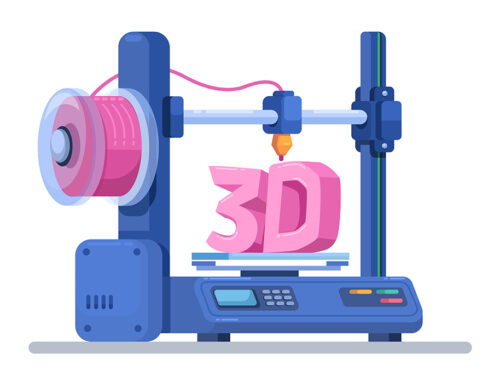As the construction industry continues to shift toward greater efficiency and sustainability, modular construction stands out as the innovative solution for expediting project timelines and optimizing cost management. But how sustainable is this approach in the long run?
Author Radiana Pit | Copperberg

Photo: Freepik
The need to ensure the long-term durability of modular structures has become paramount, and predictive maintenance is pivotal in enhancing the longevity and efficiency of these buildings.
Predictive maintenance leverages real-time data and advanced analytics to monitor the condition of equipment and building components, enabling companies to take proactive measures in order to prevent costly breakdowns and maintain high standards. And, according to Gomocha’s recent white paper, Modular Construction Meets FSM: A Strategic Blueprint for Enhanced Efficiency and Innovation, predictive maintenance will undoubtedly become a critical differentiator in building durable, efficient, and sustainable structures.
Predictive maintenance keeps modular structures in top condition
In traditional construction, maintenance is often reactive or preventive rather than proactive and predictive. Reactive maintenance means that repairs are made after a breakdown or failure occurs, which can often lead to costly downtime and potential delays. Preventive maintenance, while better, typically involves scheduled maintenance checks that may not always address problems before they arise. Predictive maintenance, however, is taking a step further to get ahead of the game by leveraging real-time data from sensors and IoT devices to continuously monitor the health of equipment and modular structures.
Real-time data from sensors
In modular construction, predictive maintenance relies heavily on real-time data collected from various sensors embedded within both equipment and building components. These sensors continuously track factors such as temperature, vibration, pressure, and performance levels, and provide crucial insights into the operational health of the machinery used to manufacture modular components as well as the building’s structural integrity once assembled.
For instance, sensors attached to essential machinery like cranes, forklifts, and module assembly robots can detect subtle changes in performance that may indicate an impending issue. By continuously monitoring equipment in this way, construction teams can identify potential breakdowns before they happen and make sure that the machinery is always in peak condition to avoid delays in the construction timeline.
Similarly, once modular structures are assembled, sensors embedded within key building components—such as HVAC systems, structural supports, and electrical circuits—can track their long-term health. This data enables facility managers to catch problems early, such as overheating components, structural shifts, or system failures, long before they become significant concerns.
FSM platforms for longer modular lifespan
Field service management (FSM) platforms play a pivotal role in leveraging this real-time data for predictive maintenance. These platforms integrate with IoT devices and sensors to analyze incoming data and automatically generate alerts when anomalies or potential issues are detected. As noted in the white paper, predictive maintenance systems can thus reduce the risk of costly failures and ensure that both equipment and building components are kept in optimal condition.
With FSM solutions, modular construction companies can also automate maintenance scheduling, dispatch service technicians before a problem becomes critical, and ensure that parts are replaced or repaired at the most opportune time. These proactive measures ensure that equipment and modular structures maintain their integrity, remain reliable and durable, and live out their full lifespan.
Data analytics reduces downtime and the need for major repairs
One of the most significant benefits of predictive maintenance is its ability to minimize downtime and prevent major repairs, which can often disrupt modular construction projects. This ability is crucial in an industry where timelines are compressed and efficiency is necessary to avoid unexpected equipment breakdowns or structural failures.
Detecting issues early on
Data analytics is the key to identifying patterns and trends that may indicate impending issues. For example, sensors may detect that a machine’s vibration levels are gradually increasing, signaling that a component is wearing out. Rather than waiting for the machine to fail, data analytics enables predictive maintenance systems to alert teams in advance and thus give them sufficient time to schedule repairs during non-critical periods when downtime does not come at high costs.
Additionally, predictive maintenance can help identify bottlenecks in the construction process by analyzing data from equipment used in the manufacturing phase. Managers are enabled to pinpoint areas where inefficiencies are occurring, such as machines that require frequent maintenance or components that are more prone to wear and tear. They need these insights to make more targeted improvements, reduce the overall strain on machinery, and minimize the likelihood of unexpected breakdowns.
As for completed modular structures, predictive maintenance ensures that small issues are addressed early. For instance, sensors monitoring the building’s HVAC system can detect small inefficiencies in airflow or energy usage and enable timely interventions before the system experiences a complete failure. This not only keeps the building running smoothly but also prevents expensive, large-scale repairs down the line.
Reducing long-term maintenance costs
By detecting issues early and preventing major repairs, predictive maintenance also significantly reduces long-term maintenance costs. Reactive maintenance often leads to expensive emergency repairs and part replacements, not to mention the cost of downtime while the issue is addressed. Even preventive maintenance, though better, can still involve unnecessary inspections or part replacements based on pre-set schedules, regardless of whether the equipment truly needs it.
However, predictive maintenance is condition-based, meaning repairs and part replacements are only performed when necessary, based on the actual condition of the equipment or structure. This eliminates unnecessary maintenance, while also ensuring that critical repairs are made before they become too costly.
Moreover, by preventing overuse or prolonged operation under suboptimal conditions, machinery and structural systems experience less wear and tear, which reduces the need for frequent replacements. This directly translates into lower maintenance costs over the building’s lifespan and provides a high return on investment.
Predictive maintenance is a smart, long-term strategy for modular construction
The list of benefits provided by predictive maintenance does not end with reduced immediate costs and downtime prevention. By investing in it, modular construction companies ultimately benefit from a long-term strategy for ensuring the success and longevity of their projects in several ways.
Ensuring the durability of modular structures
Modular construction is designed to deliver high-quality, durable buildings that can stand the test of time. However, like any construction method, the longevity of these structures depends on ongoing maintenance and timely repairs. Predictive maintenance is critical in maintaining the integrity of modular buildings by ensuring that potential issues are addressed long before they compromise the building’s safety or functionality.
Over time, even the highest-quality modular structures may experience natural wear and tear. Foundation shifts, exposure to the elements, and mechanical system malfunctions are all common issues that can degrade a building’s performance. With predictive maintenance, these issues are monitored continuously, enabling small-scale timely interventions that extend the overall lifespan of the building.
Supporting sustainable construction practices
Predictive maintenance also aligns with the sustainability goals of modular construction. Modular buildings are inherently more sustainable than traditional constructions, as they generate less waste and require fewer resources. By optimizing the performance of equipment and building components through predictive maintenance, companies can further reduce waste and energy consumption over the building’s lifecycle.
For instance, by detecting inefficiencies in a building’s energy system early, predictive maintenance can help reduce energy waste and ensure that the structure continues to meet high sustainability standards. In this way, predictive maintenance not only prolongs the life of modular buildings but also enhances their environmental performance.
Competitive advantage and customer satisfaction
Finally, predictive maintenance provides a competitive advantage. Customers are increasingly looking for long-lasting, low-maintenance buildings that offer reliability and peace of mind. Companies can differentiate themselves by offering predictive maintenance as part of their modular construction services and delivering structures that require less upkeep, experience fewer breakdowns, and maintain high performance over time.
This added value can translate into higher customer satisfaction rates, as clients enjoy the benefits of lower operating costs and fewer disruptions. The return on this can be likewise significant in terms of brand reputation and repeat business.
Financial benefits for the long-term
While predictive maintenance requires an upfront investment in technology, such as IoT sensors, FSM platforms, and data analytics software, the long-term financial benefits far outweigh the initial costs. By reducing emergency repairs, minimizing downtime, and extending the lifespan of equipment and structures, predictive maintenance delivers a significant return on investment. For companies that plan to scale their modular construction operations, this is not merely a cost-saving tool, but a critical aspect of long-term business success.
About Copperberg AB
Founded in 2009, Copperberg AB is a European leader in industrial thought leadership, creating platforms where manufacturers and service leaders share best practices, insights, and strategies for transformation. With a strong focus on servitization, customer value, sustainability, and business innovation across mainly aftermarket, field service, spare parts, pricing, and B2B e-commerce, Copperberg delivers research, executive events, and digital content that inspire action and measurable business impact.
Copperberg engages a community reach of 50,000+ executives across the European service, aftermarket, and manufacturing ecosystem — making it the most influential industrial leadership network in the region.






























